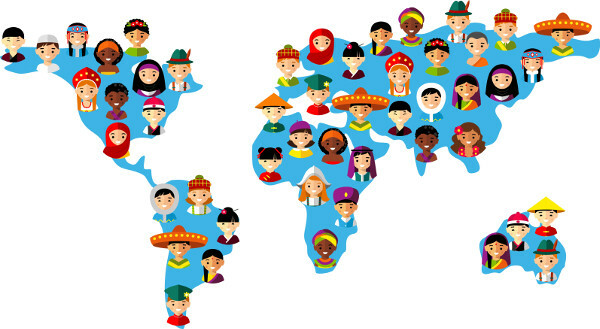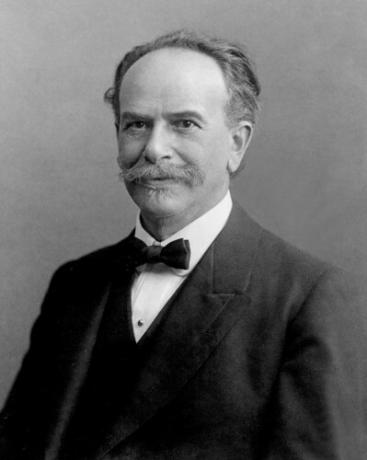Culture is a term widely explored by Anthropology, science that emerged at the same time as the Sociology and aims to analyze human societies from their cultural production, ranging from the most elementary forms of social organization to the most complex.
The sense of culture is broad. What interests us here is knowing that culture corresponds to a set of habits, beliefs and knowledge of a people or a certain artistic group (literary, dramaturgical, musical, derived from the plastic arts, etc.) that somehow cultivates a similar aesthetic pattern.
Also know: Brazilian culture: from diversity to inequality
meaning of culture
According to the Aurélio Online Dictionary|1|, culture can mean:
Act, art, way of cultivating;
Agriculture;
Set of operations necessary for the land to produce;
Cultivated vegetable;
Means to conserve, enhance and use certain natural products;
Application of the spirit to (a particular study or intellectual work);
Instruction, knowledge, study;
Accuracy; perfection; Caution.
Due to the
variety of meanings from this word derived from Latin that gave rise to expressions of care and cultivation as well as expressions that designate sets of knowledge and habits of certain societies, it is difficult to exhaust them conceptual.We can designate, with the word culture, the cultivationinvegetable (the cultivation of tomatoes or the cultivation of tomatoes), the cultivationofknowledgehuman achieved by rationality and the aesthetic sense (when we refer to a cultured person, justifying that he is literate, erudite, who knows several languages or is connoisseur of art) and culture of a people, of a region, of a nation, which presents itself in its various facets: religion, art, cuisine, customs, knowledge, etc.
Of all these ways that the word culture can refer, the last is the one that will be treated in this text, as it is the one that fits into the spectrum of subjects studied by Anthropology, a discipline that emerged in the 19th century, in the midst of emergence of sociology. The two areas make up, together with Political Science and Economics, the set that forms the so-called Social Sciences.

Concept of culture for sociology
Focusing on the term culture observed by the bias of Sociology and of the Anthropology, we can say that "it is through culture that we seek solutions to our daily problems, interpret reality and produce new forms of social interaction"|2|.
The advance of anthropological studies presents more recent views of anthropology that contradict the initial views of the discipline. Anthropological and sociological methods of social and cultural analysis have also changed. Therefore, we can highlight methods and pointsinViewmany different about the sociological study to enter the concept of culture through these methods and their thinkers.
In the nineteenth century, anthropological studies emerged in Europe, mainly under the spectrum of social Darwinism of the British biologist and sociologist HerbertSpencer. The term “evolutionism” was in vogue in nineteenth-century intellectual circles, due to the spread of Darwinian theory. Social Darwinism emerged from the connection between the studies of Darwin and Anthropology, a link made by Spencer.
In his theory, Spencer argues that there are different stages of human evolution in the world and they who present themselves through the different types of culture developed by human beings in each location.
This theory, of course, takes into account not only geographical notions, but also ethnic to separate the different peoples, which allows the perception, nowadays, that social Darwinism was a perspective eurocentric and racist supported by a scientific method.
Another great name to integrate the spectrum of Darwinism or social evolutionism was also British, considered the firstanthropologistgivesEngland, Edward Burnett Tylor. The “father” of British Anthropology revolutionized the concept of culture to apply it broadly in societies, but he was linked to a view that would later be discarded from scientific social study, for establishing social hierarchies based on production cultural.

Another important name appeared in the 19th century, that of the German geographer, physicist and anthropologist, naturalized in the United States, Franz Good. Boas diverged from the anthropological theories of his time and began to delve intocultureindigenousof American tribes, with a less Eurocentric perspective, different from evolutionists, who considered European culture superior to any culture developed by natives of the Americas, from Africa and of the Asia.
Boas' culturalism inaugurated a way of thinking based on relativization of the term culture and parameters to understand culture, as it is not possible to measure a scale of cultural development from different societies.
Boas' anthropological vision influenced a new way of thinking about sociology and anthropology in the 20th century, called structuralism. Structuralists see that there is a logic that links culture with language, culture with the people, and culture with the environment.
Following this view, the culture influences the characterization of a people, but the opposite also happens. There is also a notion of influence of the environment, but a non-determining influence. All of this constitutes an important social structure that must be analyzed.
An important name in structuralist anthropology is the ethnologist Belgian Claude Lévi-Strauss, which had his work strongly influenced by his stay in Brazil, which brought him into contact with some indigenous peoples.
Journalist Véronique Mortaigne states, in an introduction to an interview with Lévi-Strauss about her relationship with Brazil, that: in 1935, the 27-year-old teacher arrived in São Paulo and later ventured into Mato Grosso, in the lands of the Indians, inaugurating his career as an Americanist. This period of fieldwork, which will continue until 1939, will serve as the basis for the theoretical construction of his Structural Anthropology.|3|
For Claude Lévi-Strauss, it is not possible to establish a hierarchy of cultures, that is, in terms of culture, there is no better or worse, more developed or less developed, but distinct cultures, which flourish together with other elements of different social structures.
Read too: Auguste Comte, a sociologist of fundamental importance to the Social Sciences
Types and examples of culture
We can establish three basic types of culture, taking a restricted conception of the word that refers more to the aesthetic and artistic environment than to a set of collective knowledge. These types are:
high culture
High culture, often used as a synonym for a highly aesthetically developed and highly valued culture, is a term that, when used, can result in a vision ethnocentric. High culture is the culture created by an elite, economic, social or intellectual, that tries to overcome other types of culture through its own classification.
Many cultural elements created by elites were widespread, especially from European elites, often from greatdevelopmenttechnician, such as classical and baroque classical music, opera, painting and Renaissance sculpture, etc. This time, we can list as more specific examples the operas of the German composer Richard Wagner, such as Tristan and Isolde or The Ring of the Nibelungs; Caravaggio's paintings; the musical pieces by Bach, Vivaldi or the opera by Bizet.
Popular culture

And the general cultural expression of a people which, in many cases, especially in countries like Brazil, is off the scholarly axis, for being a popular manifestation created by marginal peoples, that is, those who are on the margins of society, outside the elites.
If we think of Brazil, we have a vast and rich northeastern, northern, country and indigenous culture and, in urban centers, the suburbs and slums, which don't fit the erudite standard, as our “cultural erudition” imported essentially European standards.
Take, for example, indigenous culture; O twine northeastern; Ariano Suassuna's literature (from a erudite linguistic aesthetic, in the sense of far-fetched, but based on elements of northeastern culture); native country music; samba, which was rejected by high culture for a long time because it emerged as a cultural expression of blacks, descendants of slaves and favelados; Brazilian rap and authentic carioca funk (the original carioca funk, without the interference of the cultural industry), which today undergo the same discrimination that samba suffered in the beginning of the 20th century.
These vision changes demonstrate that cultural and aesthetic patterns change over time. The same happened with jazz in the United States, which was seen as an inferior culture for having its roots in enslaved blacks, but today it has the status of high culture.
Teodor Adorno, for example, who, in addition to being a philosopher, was also a musician, considered jazz a danceable musical degeneration, fruit of mass culture, as it escaped the aesthetic standard of European high culture which Adorno used as a standard for measure.
mass culture
Mass culture is different from popular culture and high culture, but it can mix elements of both. Mass culture is not an authentic cultural manifestation created by a people or an intellectual elite, but it is a product of cultural industry,which aims to meet market norms and make culture and art a profitable business, producing and selling cultural elements as if they were objects that people want to buy.
The main producer and disseminator axis of mass cultural patterns today is the United States, which imports its cultural products to several countriesglobalized, who assimilate those products as an authentic culture.
Grades
|1| AURELIUS. Aurélio Online Dictionary 2018. Available in:. Accessed on: April 3, 2019.
|2| SILVA, A. et al. sociology in motion, vol. single – 2 ed. São Paulo: Modern, 2017, p. 60.
|3| LÉVI-STRAUSS, C. Far from Brazil. Interview with Véronique Mortaigne, translated by Jorge Vilela. São Paulo: Editora UNESP, 2011, p. 29 – 30.
by Francisco Porfirio
Sociology Professor
